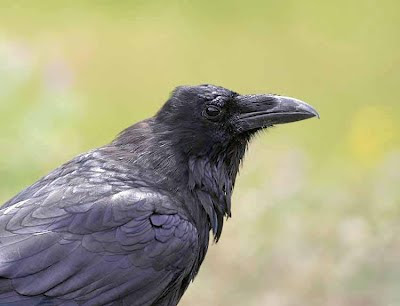It is important to avoid crowds of people and noisy activity while birding, so country roads, on the way to someplace else, are great birding locations. We were driving down a country road through the forest and stopped the car and listened. Deep in the underbrush, we heard the flute-like tones of the Hermit Thrush (Catharus guttatus). It's not chirping, chipping, clucking or peeping, but pure flutey musical notes. It is magical to hear. We heard two of them in the underbrush. You can hear what it sounded like by playing this excellent youtube video by Garth McElroy. It was magical.
Again we left the highway and drove a short way on a small dirt road. To the left was a Ruby Throated Hummingbird (Archilochus colubris) perched on a short branch. We usually see him hovering in place like a helicopter. We were just about to turn the car around to leave. On the side of an oak tree, a Ladder Backed Woodpecker (Picoides scalaris) was making holes in the trunk with its beak. These fine birds have black and white stripes in a ladder pattern on the back. Couldn't have been better.
 |
In the small coastal city of Ontonagon, there was a Lapland Longspur (Calcarius lapponicus) perched and singing in a tree next to where we had stopped. We got supplies for a picnic and headed to Porcupine Mountain for the afternoon. That longspur was a "Life Bird" for us. Pretty nice bird for such a short stop like that.
 |
There were metals signs warning of "High Bear Activity" on Porcupine Mountain, but we saw no bears. We had a wonderful picnic next to an abandoned mine on the side of Porcupine Mountain. Bats live in the mine now. The ancient mine went bust, but the toiling miner piled the residual stone removed from his mine on the side of the mountain. This hillock of stone made a terrific platform for us to get eye-to-eye even with the warblers in the top most branches of the trees. Warblers inhabit the highest most branches in the trees. So this pile of stone solved Berry's "warbler's neck", a neck ache due to craning your head looking up all day at the tops of trees.
 |
Berry saw it fly into the bush. Robert identified it. About twelve feet away, a female Black Throated Green Warbler (Dendroica virens) was needing to be identified. Another "Life Bird" for us. This I would describe as a yellow headed warbler with black stripes on his body. Berry and I make a great team. We have never seen and identified so many warblers as during this birding trip.
 |
We hiked to the summit of Porcupine Mountain. The hike started as a dirt incline, then became a steep climb, and near the summit were wooden steps and then a boardwalk. With my injured foot, making this voyage was quite difficult.
 |
When we got to the boardwalk, we zoomed in on a female Cerulean Warbler (Dendroica cerulea) in the canopy above us. We got a visual and an auditory identification on this bird. We climbed the tower at the top, just in time to see a raptor soaring past the tower. Exhausted then we descended the mountain and ate dinner in Ironwood, Michigan, on the Wisconsin border, having identified four "Life Birds" today.
 |
Robert
photos courtesy of lstokes, bshelton, gvyn, heskin and tgrey















